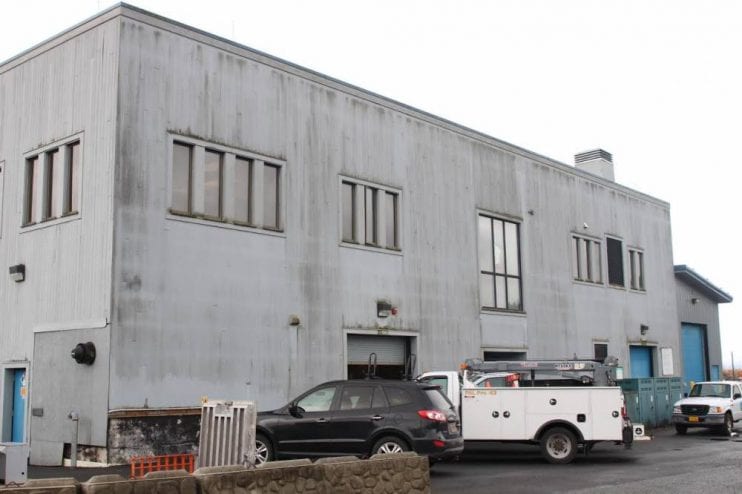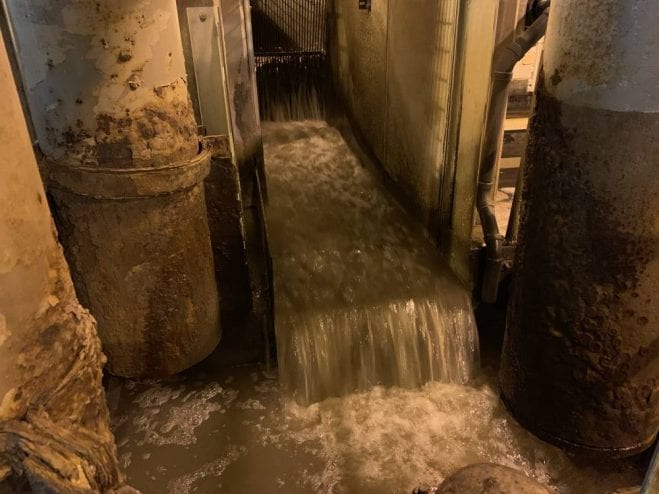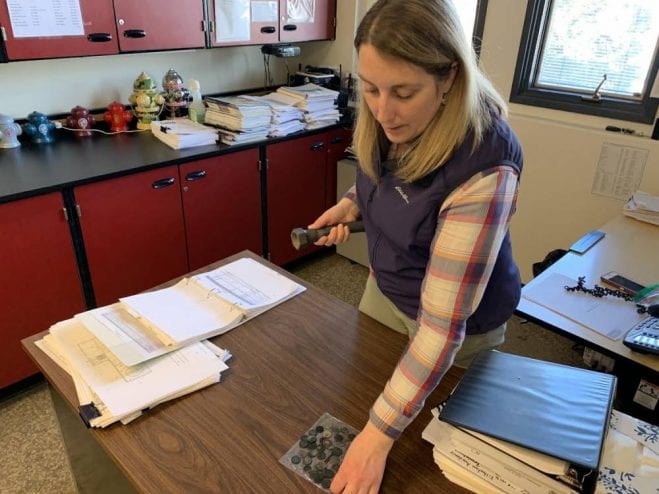
Ever wonder what happens when you flush? KCAW’s Katherine Rose visited Sitka’s wastewater treatment plant to sniff out why a $10 million dollar revitalization project is in the works for the facility that was built almost 40 years ago.
In the Disney classic “Finding Nemo” a clownfish escapes the clutches of a dangerous child by flinging itself into a sink. Washed down the drain, his aquarium buddies wave goodbye, but they’re not worried. All drains lead to the ocean, after all, right?
Well, in Sitka that’s true…but first they lead here…

To the wastewater treatment plant.
“So that’s your raw wastewater. And this is what I would call a low-flow time of day,” says Shilo Williams, environmental superintendent for the city. She’s giving me a tour of the wastewater treatment plant- a huge building on Japonski Island that houses some of the biggest infrastructure in Sitka. Williams and her team deal with the three key stages of waste…sludge, scum and grit. Oh, and all of the detritus they capture that Sitkans shouldn’t flush.
“This rack that you see right there?” Williams points to a grate that a small river of raw wastewater is running through as it enters the plant. “That’s a bar screen. What we’re collecting there are all of those things that people shouldn’t flush.” Williams says things like flushable wipes and feminine hygiene products are common catches. “We have to actually manually rake that every single day.”
After they strain all of the big junk out of the raw wastewater, they slow down the water, separating the heavy grit. Then the water is pumped to clarifiers — big pools where the “sludge” settles to the bottom and the “scum” is scraped off the top. The remaining water is pumped back into the ocean. Then the sludge goes to the “thickening” room.
“This is one of the stinkier areas of the treatment plant,” Williams says as she leads me to a big circular tank where they remove more water from the sludge.
After the thickening process is complete, they pump the dehydrated sludge to the “belt filter press.” Williams says they run the press once a week
“What happens is literally squishing the sludge and getting all the water out,” Williams says. “One final squish right here and it’s going to fall into this hopper.”

Then that dehydrated, flattened and rolled up sludge is doused with lime and dropped 20 feet into a big box that they roll out to the landfill once a week.
Each piece of equipment involved in the process is huge, expensive, and aging. But it’s the more invisible parts of the wastewater treatment plant that Williams says are in desperate need of an upgrade — the ventilation system and key electrical wiring that powers all of the systems. Here’s why: Waste produces a gas called hydrogen sulfide, and hydrogen sulfide is highly corrosive. Back in her office, Williams keeps a science experiment on her desk to show just how corrosive the environment is.
“This is the money that was in my desk drawer here,” Williams says as she holds out a handful of blackened pennies and half-dollars. “You can see a lot of it is unrecognizable, due to the corrosive environment.”
She shows me a piece of copper pipe that she pulled out of the ground in last September. She says it was shiny several months ago, but it’s unrecognizable as copper today.

Williams says the ventilation system has been funneling some gases from treatment plant back into their office space, making a lot of office equipment obsolete fast. Computers have to be encased in protective gear. Lab equipment has a shorter shelf life. And they have to use home printers instead of expensive, heavy duty office printers, because they break so often.
“Some of them will last a few months,” Williams says. “Mine I think I’ve had for about eight months. It doesn’t always function.” Williams says she and staff often blame the “wastewater gremlins” when a piece of office equipment suddenly stops working.
It doesn’t just impact the hardware. Williams says it affects humans too. Worst case scenario, hydrogen sulfide exposure can be deadly. She says the levels aren’t that bad, but they’re noticeable, often causing nausea, along with burning of the throat and eyes.
But the project to revamp the wastewater treatment plant is costly. When speaking to the Sitka Assembly last month, it was clear that in order to fund the $10 million dollar project, the assembly would be required to move ahead with a plan to raise rates. But assembly member Aaron Bean wondered if they couldn’t figure out a way to patch things up at the plant without spending so much money.
“We need to do what we have to do to make what we have work. If we’re making the environment safe that should be an alternative. It shouldn’t be bulldoze it and replace it, is my point.”
Public Works Director Michael Harmon said they’d already figured out how to make the project as cost efficient as possible.
“This is by no means bulldozing the project and starting over, you’d be looking at probably 60 million to do that,” he said.
Back at the plant, Williams says it isn’t about making the plant glamorous, just safe.
“The wastewater plant isn’t ever going to smell pretty, because it is a wastewater plant. But it will be much better, it won’t be as terrible as it is now.”
Just like the filter in Nemo’s scuzzy aquarium, Williams hopes the renovations will help the wastewater team continue to keep Sitka’s scum and sludge and grit at bay.































